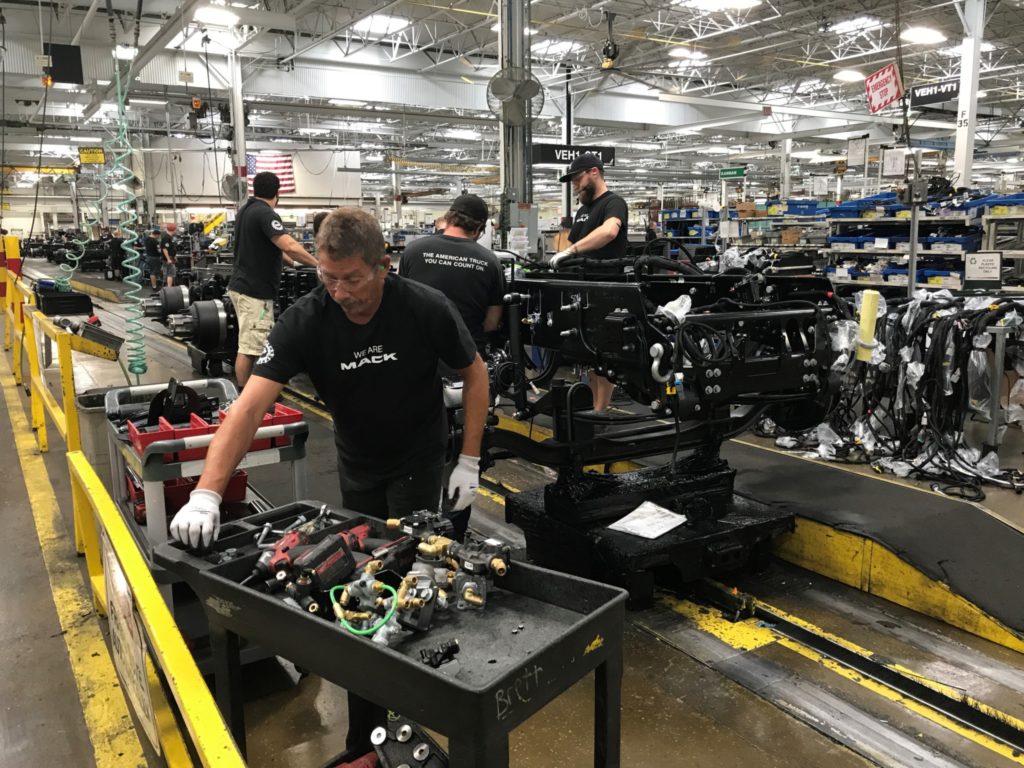Freight markets remain strong, but first signs of clouds on the horizon
ACT Research reports that freight and commercial vehicle markets are likely to remain hot, but “there might be a cloud or two on the horizon.”
Jim Meil, industry analyst, noted during a webinar this week there are some concerns about Covid, inflation, rising oil prices, supply chain disruptions, and labor availability. Microprocessors, which are in short supply, are also going up in price due to demand, he noted. The cost has increased 4% this year, which contributes to inflation.
But Tim Denoyer, vice-president and senior analyst, said the freight market remains strong, and repeated his projection for a peak season that will be “stronger for longer” than norms. With record numbers of container ships anchored or adrift off the U.S. West Coast, he said the industry is experiencing the longest freight backlog ever.
The railroads are also backed up, and there’s a chassis shortage that is keeping a lid on service levels.

“Truckload volumes will stay strong through the holidays,” Denoyer said.
Next year some of the tailwinds driving freight volumes and rates this year will disappear, but anticipated infrastructure spending will give freight another boost. Industrial demand is also expected to improve next year – another boon for freight.
But Denoyer said the industry will likely see a freight recession in 2023, “after an extraordinarily long cycle.”
He noted driver availability is gradually improving, and the industry forecaster is seeing early signs of a rebalancing in the market. ACT is forecasting double-digit truckload rate increases this year, followed by a sharp slowdown in 2022, with the pricing pendulum swinging back in favor of shippers by mid-2022.
Kenny Vieth, president and senior analyst of ACT, noted 6% GDP growth this year and next will continue to “generate a lot of freight.”
Its freight index has reached “best ever” levels this year and 2022 will still be the third best year on record, he predicted.
In terms of the commercial vehicle market, Vieth said demand is “as good as it gets.” However, he said OEMs are managing record backlogs. Any weakness in Class 8 orders, he said, is related to OEM backlog management and not softening demand.
ACT predicts there are about 25,000 “red tag” units – trucks that are incomplete due to missing parts, most notably semiconductors. Vieth things the red tag backlog will be built out by the end of this year.
“The good news is, there is semiconductor capacity coming online,” Vieth said. “When the semiconductor supply loosens, Class 8 production will go vertical.”
Analyst Frank Maly said the same supply chain issues are also affecting trailer manufacturers. OEMs are dealing with full order boards and are hesitant to open up 2022 build slots due to uncertainty over pricing and parts availability.
The U.S. trailer industry is operating well under capacity, building 1,044 units a day in 2021 compared to 1,487 a day in 2019.
The trailer backlog will take eight months to work through, and a new order season is approaching. Maly said it’s not inconceivable the backlog will stretch to 13.4 months. ACT is projecting 267,000 trailers will be built this year, climbing to 316,000 in 2022. “It would be one of the best years that we’ve had,” he said.
Have your say
This is a moderated forum. Comments will no longer be published unless they are accompanied by a first and last name and a verifiable email address. (Today's Trucking will not publish or share the email address.) Profane language and content deemed to be libelous, racist, or threatening in nature will not be published under any circumstances.